Audio filters are one of the important methods within the producer’s toolkit. When used effectively, they’ll present readability and area to your combine.
Nevertheless, it may be simple to over-complicate using filters and get misplaced within the phrases.
On this information, we’ll sort out:
- What an audio filter is
- The essential parameters of a filter
- The several types of filters and when to make use of them
- 3 secret tricks to push your sounds to the following degree
Let’s dive in! 👇
What Is An Audio Filter
Chances are high you’ve heard of what EQ (or equalization) is. In a nutshell, a filter is just a predefined means of making use of a sure EQ form to your sound.
By both lowering or boosting a sure frequency area, you possibly can form particular person sounds to your liking.
The way in which you increase or cut back particular frequencies will decide the identify of the filter, as we’ll discover on this information.
One purpose to use filters to your sounds is that you may simply alter them dynamically to make your sounds evolve over time. As an alternative of getting a static frequency spectrum enjoying, you’re adjusting in real-time the frequencies coming by way of for artistic functions.
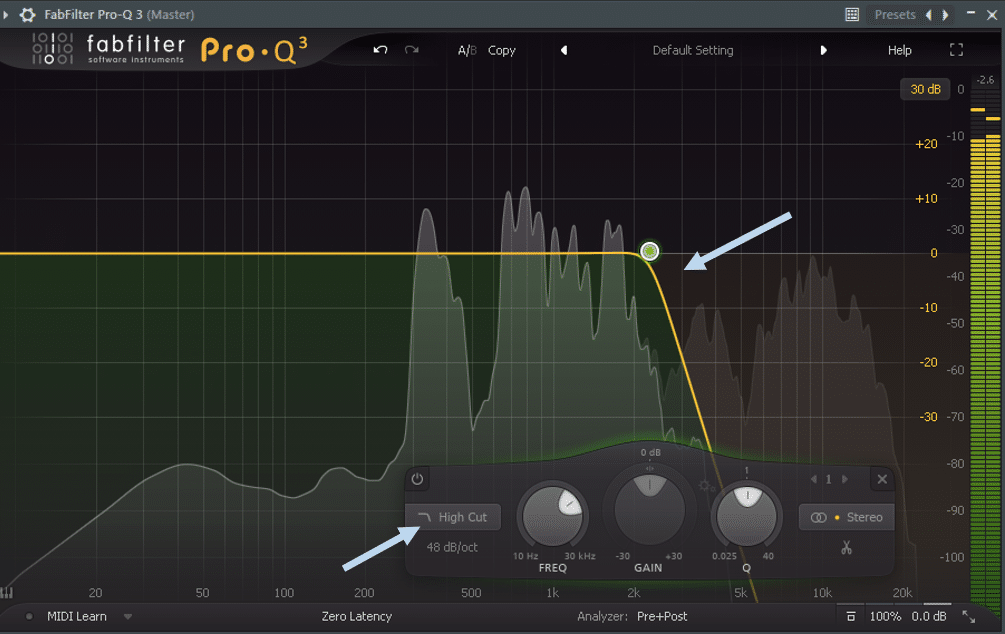
These days, filters have turn into a cornerstone of music manufacturing. Each DAW from FL Studio to Ableton Dwell has its personal inventory plugin for this goal. There are additionally some well-known third-party filter plugins which we’ll discover by way of some examples.
The factor to recollect is that filters are merely a selected software of EQ’ing. Subsequently, most parameters used to EQ additionally apply for filters.
The Primary Parameters Of A Filter
Though a refresher by no means hurts, be happy to skip this part for those who’re a Jedi of EQ’ing. A lot of the controls are the identical.
Cutoff
Generally merely referred to as Frequency in some plugins, this units the frequency level round which the filter will probably be utilized.
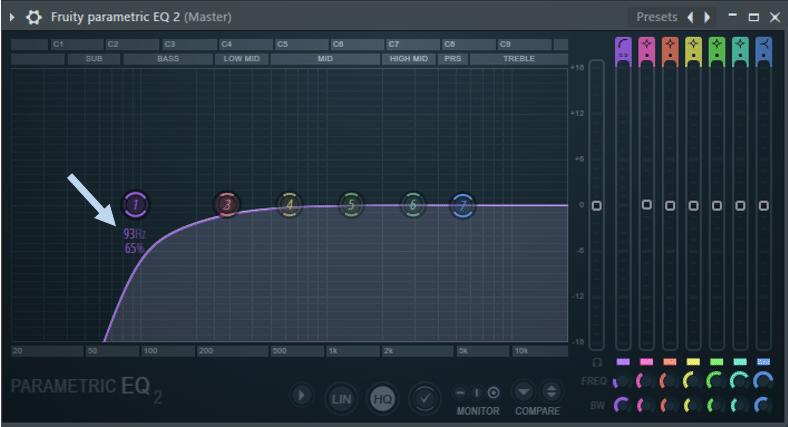
Resonance
The Resonance parameter additionally referred to as Q or Bandwidth, defines the emphasis of the frequencies across the cutoff level.
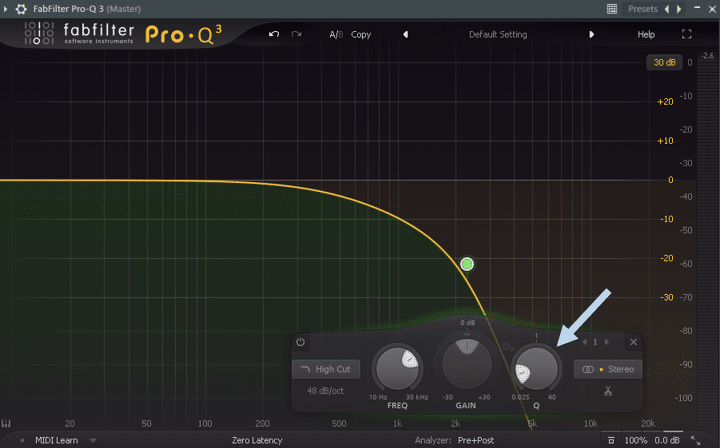
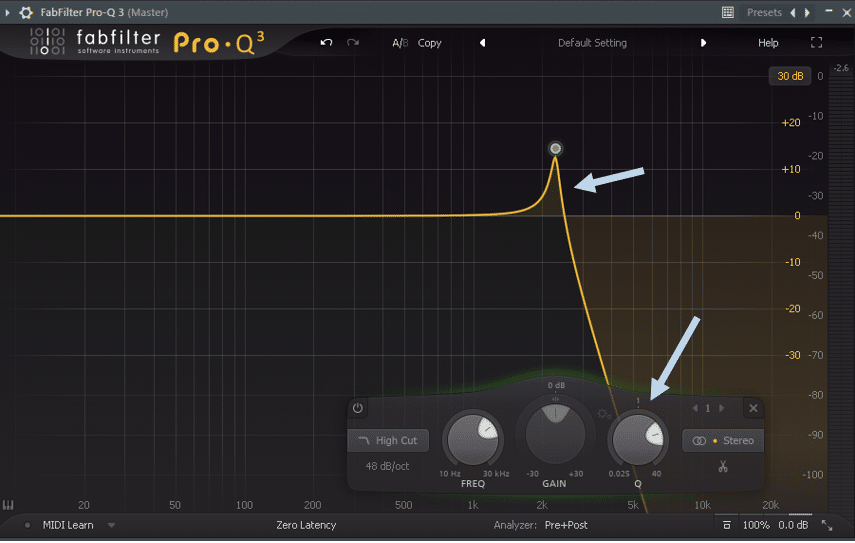
Setting the Q level too excessive can create disagreeable frequency resonances, so pay additional consideration to this setting.
Slope
The Slope determines the steepness of the present audio filter sort. A steep slope will abruptly increase or take away frequencies, whereas a mild slope will probably be extra progressive.
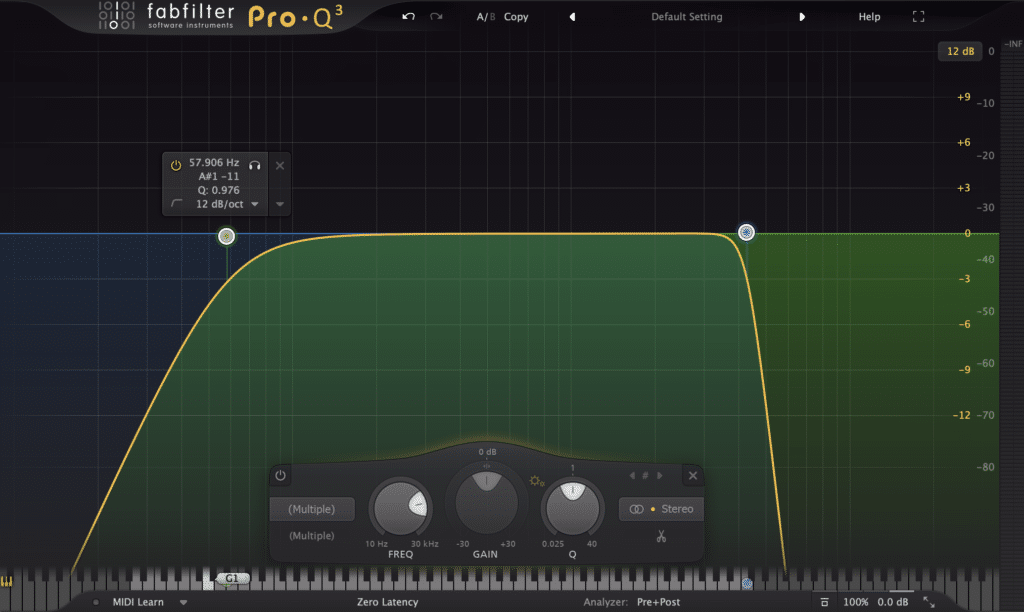
Stereo Placement
Lastly, some plugins help you apply a filter to solely chosen channels. That is superb for those who solely need to have an effect on the aspect or mid data of your sign.
Within the well-known FabFilter Professional-Q 3, you possibly can select to selectively apply your filter to the L/R channel, Mid, Facet, or Stereo data of your sign.
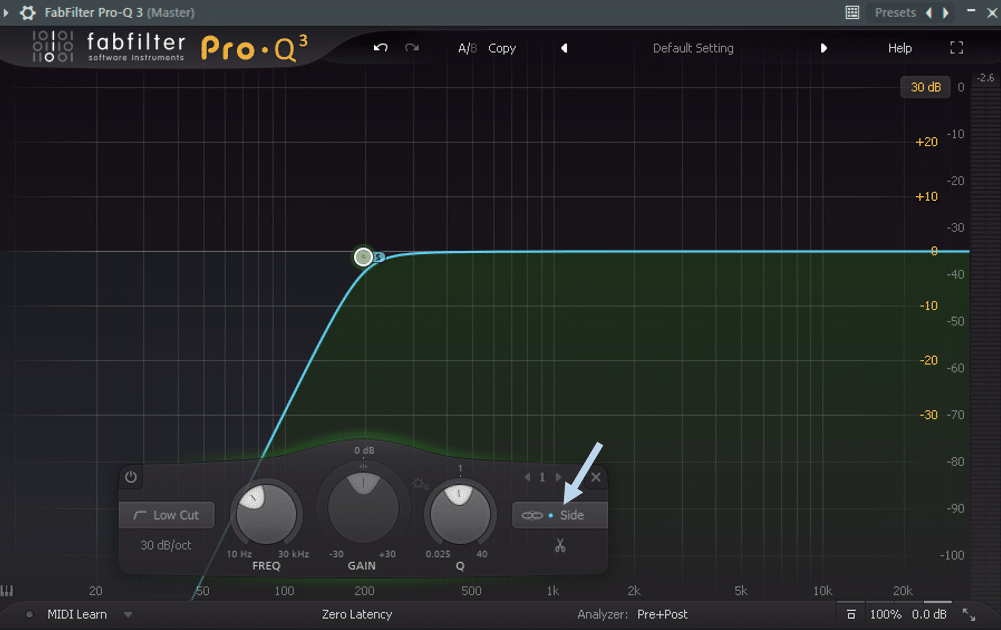
If you have to brush up on all issues mid, aspect, and stereo imaging, be sure that to take a look at our newest information right here!
Totally different Forms of Audio Filters
As defined above, an audio filter is predicated on a given EQ form that may increase or take away frequencies.
The chosen form then provides its identify to the filter. Let’s discover essentially the most generally used ones, and how one can apply them to your music.
Low-Move Filter
A low-pass filter will, because the identify suggests, let by way of frequencies under the cutoff level.
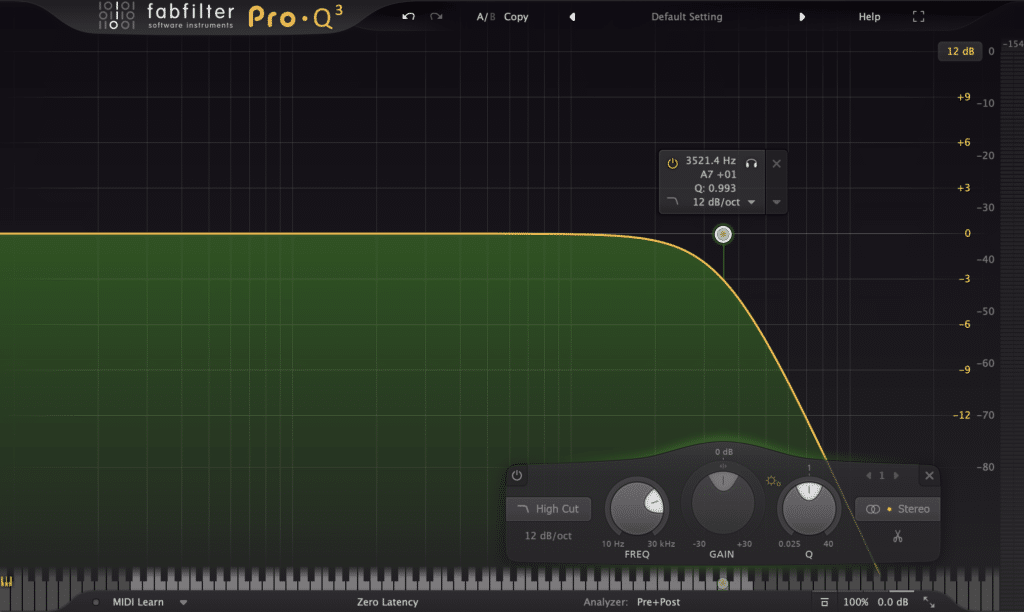
It’s price noting right here that the terminology can generally be complicated. A low-pass filter can be referred to as a high-cut filter – each take away frequencies above a sure cutoff.
A low-pass filter can be utilized for components which can be too brilliant in your combine. For instance, I like to layer my pads to create rich atmospheres.
In that case, I’d apply a low-pass to 1 pad to take away the excessive frequencies, whereas retaining the total spectrum of the second pad.
Equally, a low-pass can flip your pads from brilliant and colourful to deep and gloomy. Hearken to the distinction a easy low-pass filter brings to this loop:
Low-passes are additionally used rather a lot in sound design, since modulating them can create cool wobble and movement results.
Excessive-Move Filter
Alternatively, a high-pass (or low-cut) filter will take away frequencies under a given threshold.
For a lot of producers, this has turn into a go-to step to offer readability to the combination. Low-cutting most components besides your kick and sub-bass between 60 Hz and 120 Hz will assist tighten up the low-end.
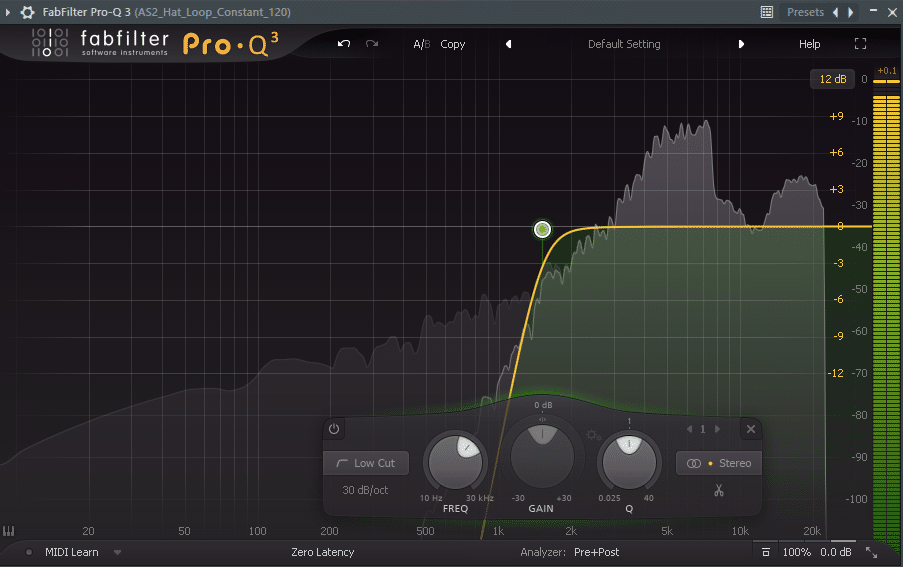
Nevertheless, watch out for making use of too many high-pass filters. Constantly eradicating the low-end out of your sounds can take away their physique and punch.
I’ll usually high-pass my hats, shakers, and different cymbal components that may have pointless low-end data.
This may typically occur after making use of saturation and introducing new frequencies (for the A-to-Z on saturation and distortion, try our Full Information right here).
Equally, a high-pass filter will be a good way to isolate particular components from a loop.
Band-Move Filter
A band-pass audio filter is just the mixture of each a low-pass and a high-pass.

One frequent software of a band-pass filter is the phone impact. That is achieved by setting the middle frequency round 2000 Hz as such:
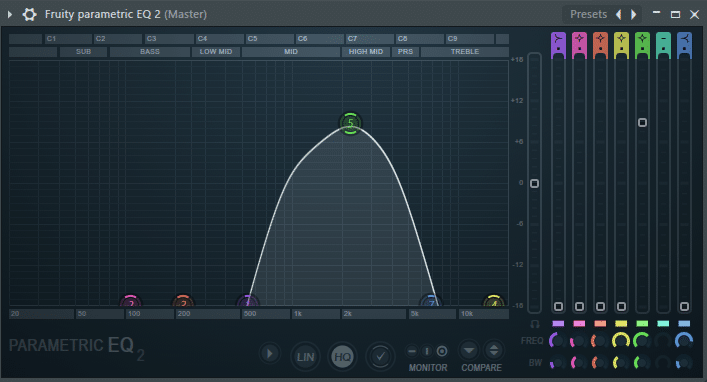
Let’s take heed to how this band-pass filter impacts the sound:
Shelf Filter
If high-cutting or low-cutting is just too drastic, a shelf filter is likely to be a greater choice. It primarily units a flat “shelf” after which the frequencies are both boosted or attenuated.
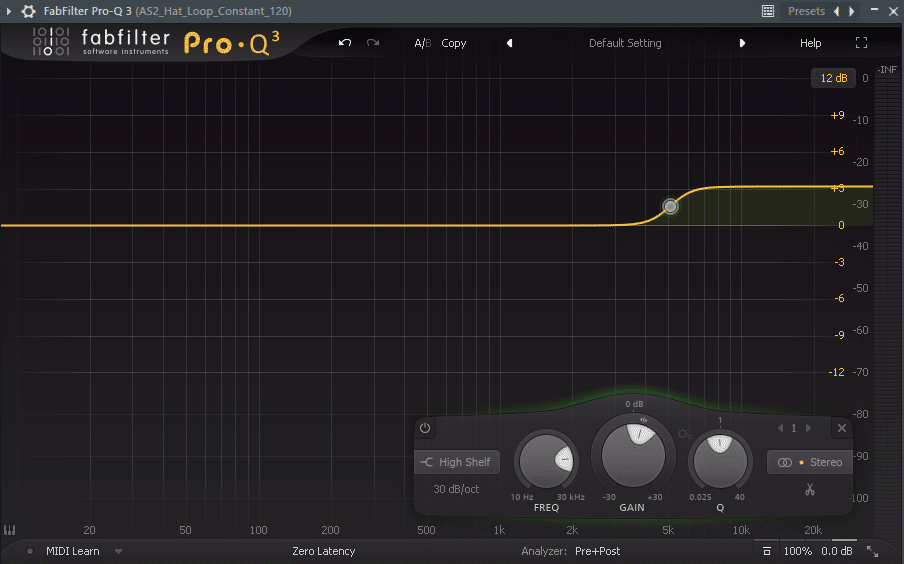
I typically set a mild +2db excessive shelf to my drum bus to convey out a little bit of brightness within the tops.
Making use of a high shelf to vocals can be a good way so as to add that little bit additional readability. Hearken to how the vocal peaks out only a bit extra on this instance:
Notch Filter
Lastly, notch filters (additionally referred to as a band-reject or a band-stop) are the alternative of band-pass filters:
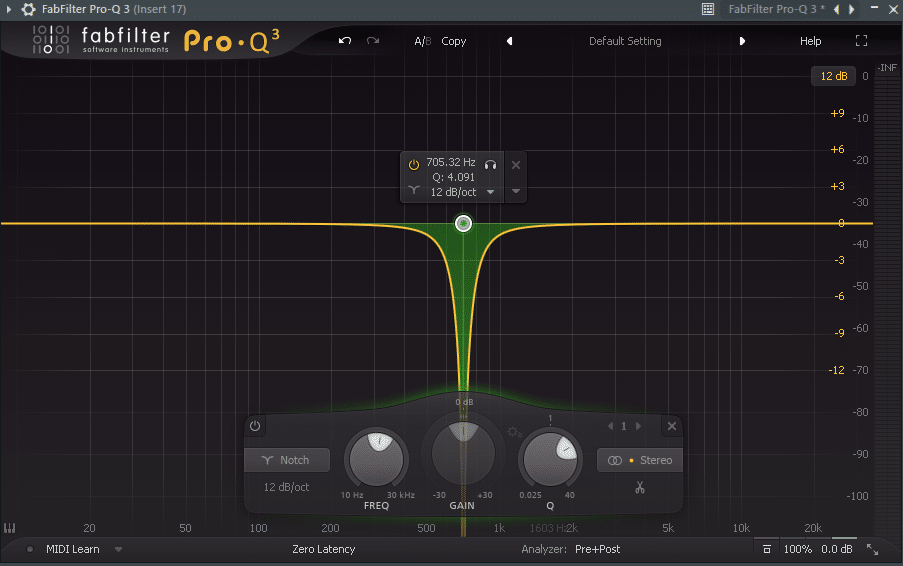
Notches are ideally suited to take away any annoying or resonating frequencies.
A good way to do that is to brush the frequency spectrum with a steep bell-shaped EQ to isolate frequencies.
As soon as a pointy resonating frequency pokes out, swap to a notch filter and minimize that frequency out.
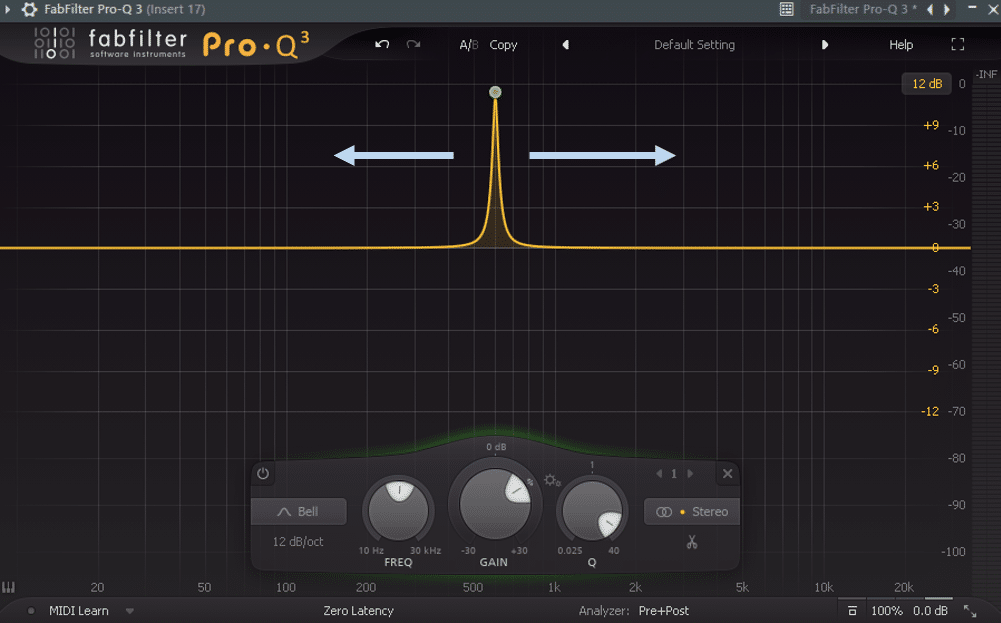
Once more, notch filters will also be used to create cool sound design results, particularly when designing basses. The ‘hole’ created sounds significantly cool once you transfer the cutoff.
Formant Filter
A formant filter is an audio filter that goals to imitate how the human voice produces vowel sounds. That is usually achieved with excessive peaks and low valleys which method one another:

Most of the filter controls are completely different in comparison with conventional audio filters like high-pass and low-pass:
- the mix slider is changed with a formant transpose slider;
- the resonance and frequency cutoff sliders, are changed with formant X and Y sliders. These will alter the connection of the peaks and valleys which can be utilized to supply completely different vowels (on this instance, A-O-I-E);
- the drive knob is changed with a peak knob (principally a resonance management for the peaks and valleys).
Comb Filter
A comb audio filter is principally a collection of notch filers:

A comb filter provides a consequence much like a flanger as a result of section cancellation it creates. Right here’s what a comb filter appears like when automating the cutoff:
Analog Filters, Digital Filters… What’s that About?
When enjoying with synths reminiscent of Serum or Important, you would possibly come throughout several types of filters the place the variations should not obvious.
For instance, Important allows you to select between digital filters, diode filters, analog filters… However all of them appear to be easy low-pass and high-pass filters.
So what’s the distinction?
The completely different filter varieties obtain the identical objective however achieve this with completely different algorithms. The variations within the filter varieties turn into extra obvious when utilizing self-oscillation or turning up the filter drive for instance.
A ladder filter for instance typically references an precise low-pass filter present in Moog synthesizers. It will probably typically give a little bit of a classic really feel to your low-pass filter. When you push the drive up, than you’ll get some nice heat distortion.
The perfect is to mess around with a few of these filters, and see which one matches your monitor one of the best.
3 Artistic Functions of Audio Filters
There are literally thousands of methods you might apply audio filters creatively.
As defined beforehand, a key benefit of filters is the flexibility to regulate them over time.
Listed here are 3 tried and examined purposes assured to convey you superb outcomes:
Introduce New Components Seamlessly
Introducing a brand new aspect into your association can show difficult. Generally, fading in doesn’t fairly minimize it.
That is the place a low-pass can show to be useful. By automating the cutoff and slowly revealing extra frequencies, the transition will sound way more pure.
For this, I used FL Studio’s inventory plugin Fruity Filter set to low-pass, with a comparatively low resonance. I then automated the cutoff frequency to slowly reveal the complete spectrum of the brand new sound:

In Ableton Dwell, you possibly can obtain an analogous consequence with Auto filter.
This system can work with all genres. Nevertheless, it’s particularly nicely fitted to genres with gradual progressions reminiscent of home and techno.
The Gate Audio Filter
The gating impact is a well-liked sound that got here to prominence in genres reminiscent of trance and has been resurrected in fashionable techno.
A typical approach to create the gate impact is by merely automating the quantity up and down.
Nevertheless, you should use a filter as a substitute. For this, I really like to make use of the free plugin Filterstep.
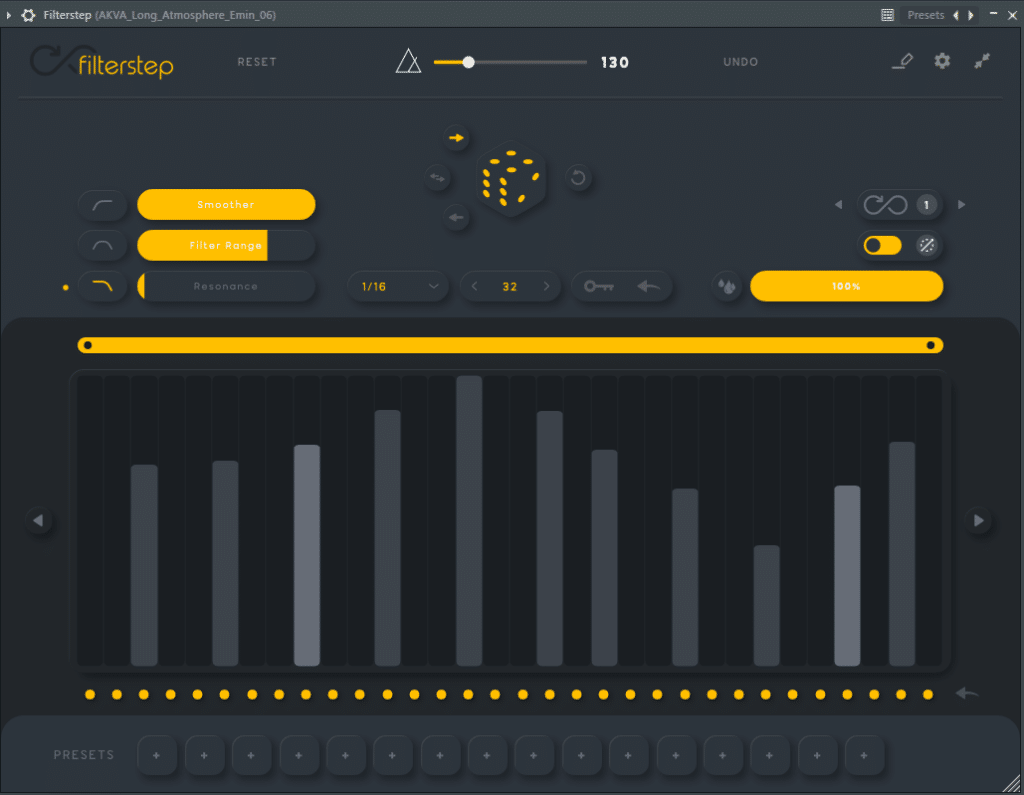
For a free plugin, Filterstep is sort of exceptional. It means that you can attract particular sequences which can decide on which notes the filter is utilized.
Within the above instance, I’ve chosen a low-pass filter, divided the audio into Sixteenth-notes, and drawn within the quantity of filtering to be utilized on sure notes.
Let’s take heed to what this appears like, first with none gate impact, then making use of the above settings:
You too can add a little bit of reverb and sidechain it to fill within the blanks and make the gate smoother. The probabilities with Filterstep are fairly in depth, and I’d actually suggest giving it a strive.
Really useful: Free VST Plugins – The 51 Finest Synths & Results
Creating Efficient Buildups with Audio Filters
Final however not least, filters are a good way to construct anticipation in your tracks. Usually, the 4 to 16 bars previous your drop ought to let the listener know one thing large is about to occur.
You’ve absolutely heard the phrase “let the bass drop!”. That’s as a result of there shouldn’t be any bass enjoying proper earlier than your drop!
Low-cutting your whole monitor because the drop approaches is a good way to offer your drop extra punch.
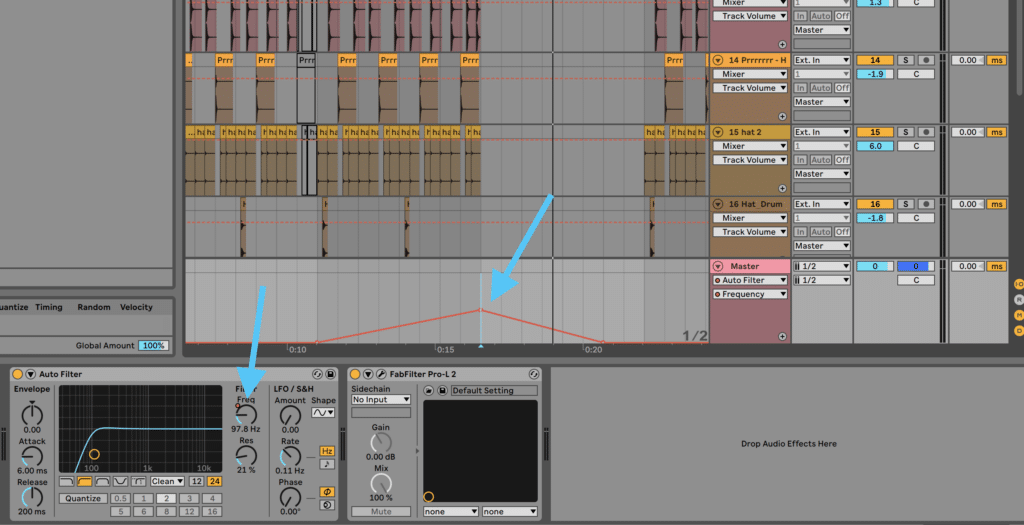
Wanna go a step additional? You may progressively low-cut the aspect sign of your grasp monitor because the drop approaches. This may depart you with an more and more mono sign because the drop approaches.
When the drop finally… drops, de-activate each low-cuts. This may convey again each the bass and all of the stereo data, making for a extra impactful drop.
The place to Discover Audio Filters
Now that we’ve coated what audio filters are and easy methods to use them, you is likely to be asking your self:
“The place can I get my arms on all these fancy filters?!”
So let’s discover the place to search out among the finest filters on the market.
Inside your synth
Imagine it or not, many of the finest filters are literally already inside your synth.
For instance, Serum gives dozens and dozens of audio filters to play with:

You’ve gotten the identical checklist of filters within the FX part if you wish to do some post-processing. This implies you’ll hardly ever want to make use of a filter outdoors of Serum!
The identical goes for Important, which has a bunch of various filters obtainable.
Your inventory filters
Your DAW possible comes with some filter plugins, which even have their very own presets.
For instance, in Ableton Dwell, you might have Auto Filter, which has dozens of presets to select from:

FL Studio has Fruity Love Philters, which additionally has an honest quantity of presets:

Third-party audio filter plugins
When you’re nonetheless not happy, then you possibly can at all times obtain some exterior filter plugins. There are many free and paid choices on the market, however listed here are a number of I might suggest:
- Kilohearts: they’ve 30 free impact plugins you possibly can obtain from their web site, together with a number of forms of filters;
- Filterfreak by Soundtoys: we’ve completed a assessment of our favourite Soundtoys plugins right here. Filterfeak is a monster of a filter plugin, supplying you with a variety of automation choices;
- Filterverse by Polyverse: a very cool-looking plugin that gives you outcomes you possibly can’t get with another plugin.

Final Phrases on Audio Filters
Hopefully, you’ll now have a greater grasp of audio filters and easy methods to apply them in your individual productions. As at all times, bear in mind to experiment and break the foundations to find new cool sounds!
And bear in mind to seize that EQ cheat sheet! 👆